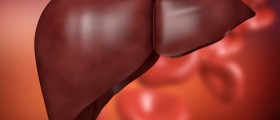
About jaundice
Jaundice or icterus is a term used to describe a condition in which a person’s skin becomes yellowish, and the whites of the eyes become yellow as well. Changes in color can also be noticed in body fluids.
Jaundice is caused by excess bilirubin in the blood. Bilirubin is a yellow substance that is a by-product of breakdown of red blood cells.
It is not uncommon for newborns to have jaundice right after they are born. It is probably a result of underdeveloped liver or incomplete liver functioning. However, jaundice in newborns is not something to be very worried about, since it usually disappears in a week or so.
In older children and in adults, jaundice may indicate an underlying health issue that should be addressed.
Causes of acute jaundice
Jaundice is, in most cases, associated with the liver. Liver is a very important organ that, among other things, picks up and removes bilirubin, a by-product of red blood cell breakdown. Bilirubin is transported to the liver, where it is processed or filtered and then removed through urination. If the liver for some reason cannot get rid of the bilirubin, the excess may lead to jaundice.
There are several possible reasons why the liver cannot filter and remove bilirubin. Acute hepatitis is a liver disease, caused by hepatitis A, B, C, D or E viruses. Acute hepatitis may also result from severe alcoholism or the use of certain medications.
Obstruction of the bile ducts is another possible cause of jaundice. Bile ducts are small tubes in the liver that remove bile. If they are obstructed, for example by a bile stone, or if they are damaged in an injury or due to cirrhosis, it may lead to excessive buildup of bilirubin.
Haemolytic anemia is a condition in which a large number of red blood cells are broken down, leading to formation of excess bilirubin. Haemolytic anemia can result from an autoimmune disease or a blood-borne disease.
Gilbert’s disease is a disease that affects the way in which enzymes process the excretion of the bile. This is an inherited disease that affects approximately 3% of the population. People suffering from it may occasionally experience mild jaundice.
Less common causes of jaundice
The conditions and diseases mentioned above are considered common causes of jaundice. There are other, less common conditions, that list jaundice as one of the symptoms or effects. Crigler-Najjar syndrome, an inherited disease, affects the enzymatic processes regarding the secretion of bilirubin. Dubin-Johnson syndrome is a similar, also inherited condition.
There is also a condition called pseudojaundice. In this condition, the yellowish color of the skin does not have anything to do with bilirubin and most likely comes from excess beta carotene in the blood. It is a completely harmless condition.

















Your thoughts on this
Loading...